MANILA, PHILIPPINES — It’s nearly impossible to walk out the doors of SMX Convention Center feeling uninspired or unmotivated after witnessing such astounding display of creativity on the first day of Graphika 2020. As the brilliant mix of local and international artists (either living their best freelance life or proudly showing off their client work from highly-respected studios) graced the stage one by one, and we dove deeper into the event, the overwhelming sense of wanting to create something progressively got stronger within the conference hall amidst Graphika’s growing creative community.
This edition marks a very important milestone in the country’s biggest creative conference as it celebrates its 15th year. The group behind this year’s overall theme, Hydra Design Group, proudly shared that this is also the first time the theme was completely built from the ground up. This was done by none other than the first speakers of the day — Hydra Design Group’s Pauline Despi (Co-founder, Hydra Design Group / Creative Director, The Acid House) and Joanna Malinis (Graphic Designer, Hydra Design Group / Plus63 Design Co.) — who explained how the Graphika 20/20 identity came to be.
Creative Vision
As a local design collective (made up of four unique studios: The Acid House Post, Inksurge, KM Interior Design, and Plus63 Design Co.) that believes in the truth behind the age-old saying “more heads are better than one”, the story behind this year’s theme is a manifestation of that integral part of the group’s identity. Jumbling up the artists from each studio to create 4 groups made up of creatives with different specializations, Despi and Malinis shared how their team came out as victor from this pitching competition staged within the group to come up with the final concept that will be presented to Graphika.
This, the Swarm approach, is but one of the many approaches to a project that Hydra as a collective undergoes where they go into a project in full force and as a whole. Apart from this, there are three other processes included in the “Hydra Attack Patterns” that the collective utilizes to determine which team will handle a project: Alpha, where the studios compete with one another; Sentry, in which the studio that is most free or most specialized will be selected; and Strike, where the team will be handpicked from each studio.
Their team’s concept, which became the conference’s overall theme, “The Creative Vision”, focused on the multitude of stories and perspectives that come into Graphika’s doors each year.
“A play on perspective that symbolizes the views of each person going into the event”, Malinis stated. “Graphika has always been a shared experience that inspires thousands of new ideas for every person walking out of the conference doors. With Graphika 20/20, we’re celebrating just that — the manifold creative visions that emerge from every one of us.”
Hearing these words from them, their presentation and story felt like a beautiful recollection of what Graphika really stands for, and what about it attracts large mounds of audiences to begin with. It was a fitting opening to a weekend of distinctly creative individuals sharing their life’s work onstage, and a powerful introduction to set the tone for the rest of the conference.
Hydra Design Group's Pauline Despi and Joanna Malinis on the conceptualization for this year's #Graphika2020 theme:
"The Creative Vision – a play on perspective that symbolizes the views of each person going to Graphika" pic.twitter.com/IoySOtX1cp
— adobo magazine (@adobomagazine) February 15, 2020
The second session of the day went back to the basics of illustration and reintroduced drawing concepts as South Korean artist Kim Jung Gi dedicated his presentation to real-time sketching. Sitting behind a table with a translator beside him, the conference projects his hand’s every move, and a hall filled with eager artists at the edge of their seats waiting to see his genius at work. This was the atmosphere in Graphika as soon as he took the stage.
Thinking inside the box
Despite sitting in the same spot during his 45-minute presentation consisting of him merely talking as he illustrates his stories, Kim’s innate charm and undeniable talent held everybody’s attention hostage. Look away for a few minutes, and you would have missed an important technique. Next thing you know, an entire sketch has been made freehand and with no pencil guides.
Perhaps one of the things that makes Kim Jung Gi such a fascinating and respectable artist is his remarkable observational skills, and spot-on memory. He takes it all in from every angle, studies every detail, and impressively draws it based on memory from there (with just a pen, and no erasures!). He also explained how he would dissect structures and turn them into simpler shapes to help him imagine how to draw figures better.
Learning about perspectives through drawing inside boxes was also a big part of his presentation as he demonstrated depicting the same subject in different angles by putting them in boxes first. He ends his first session with this thought: “How interested you are will give you a better perspective of the world.”
"When I'm drawing, I don't replicate the image itselr, I envision it in boxes first. And I learnee perspective from there." – Kim Jung Gi #Graphika2020 pic.twitter.com/1RO8wmLgRl
— adobo magazine (@adobomagazine) February 15, 2020
Visual story development
Next onstage was Wendell Dalit, a New York-raised Filipino illustrator and visual developer at Sony Pictures Animation, responsible for a lot of stunning visuals and characters from popular animated films such as Smurfs: The Lost Village, The Emoji Movie, and Spider-Man: Into the Spider-verse. As he put it, visual development is telling a story through light and drawing.
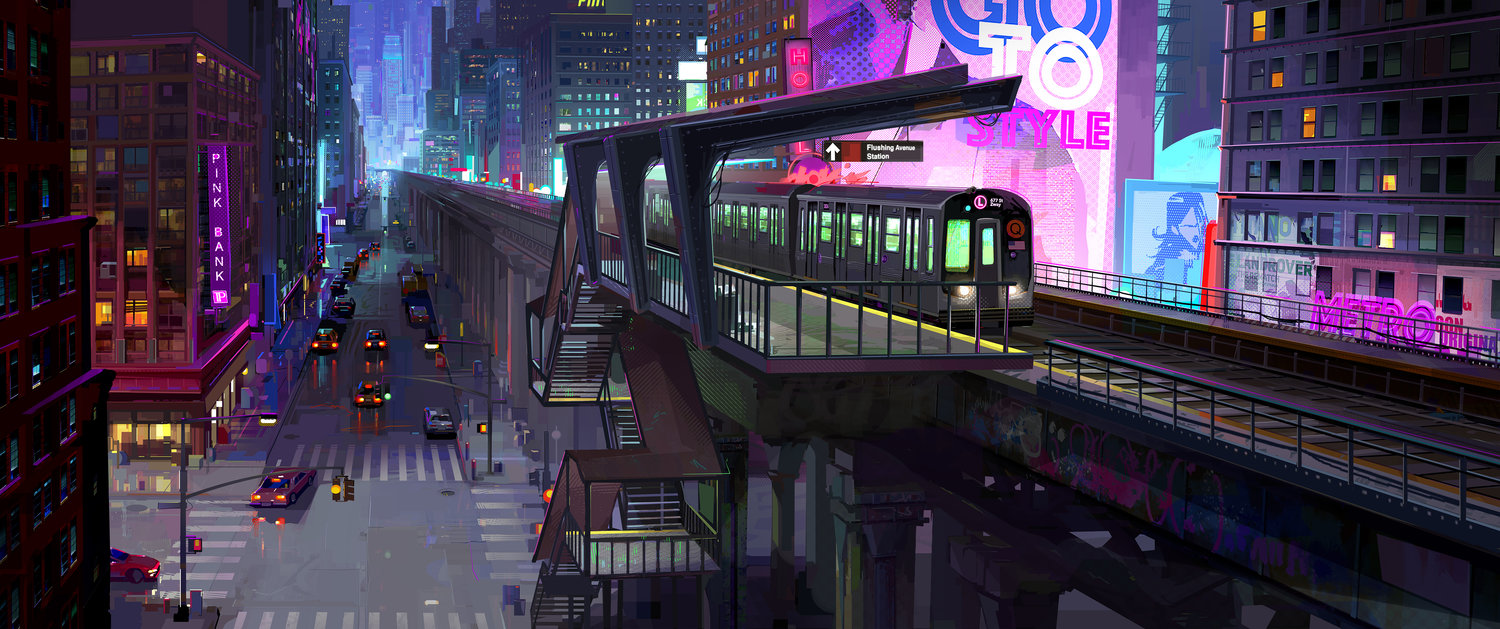
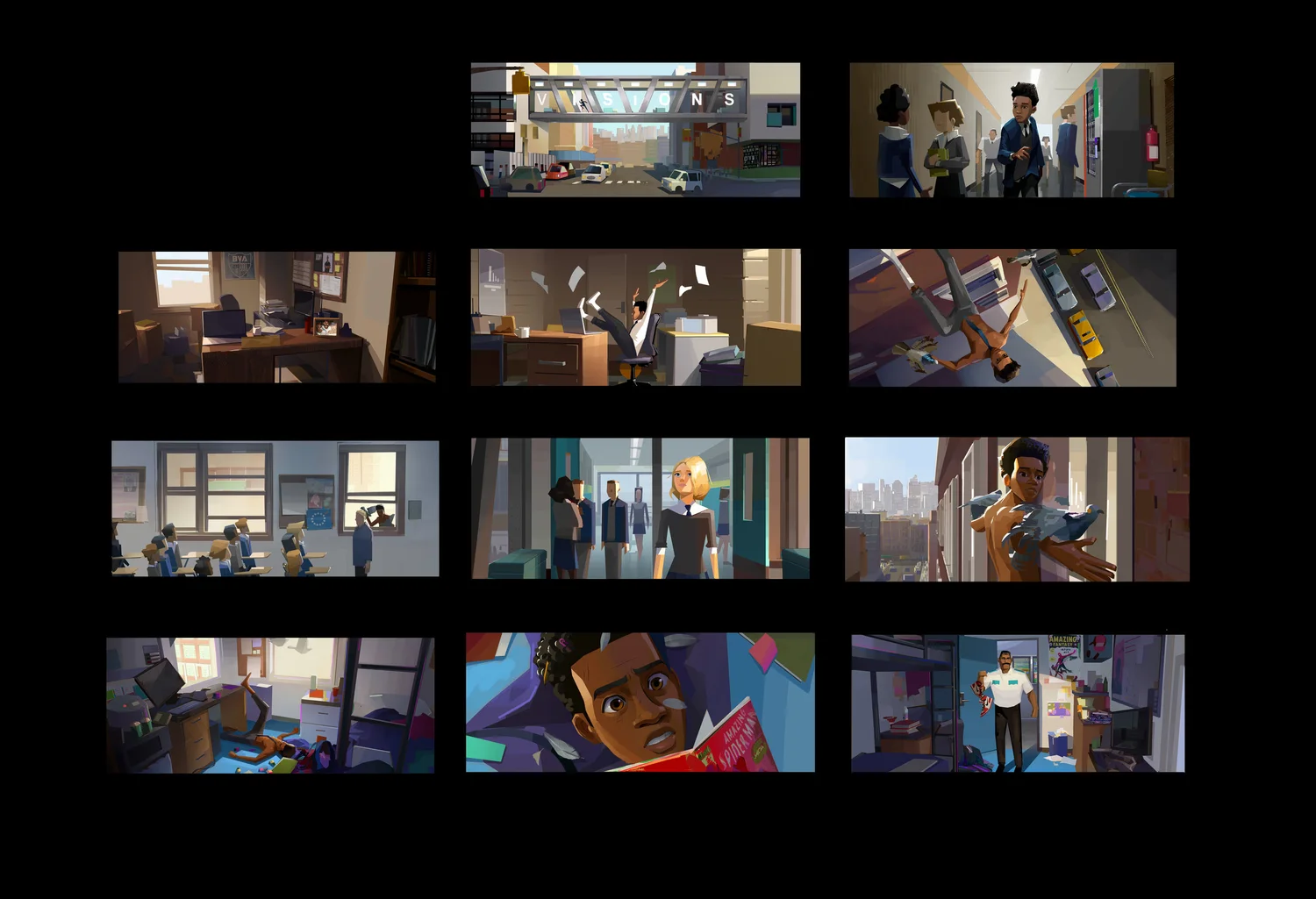
Dalit’s visual developer role largely revolves around laying down the framework and composition of how each frame will look in an animated movie, before 3D artists and other producers work on the actual shots and details. This involves the color grading, lighting direction, and overall “feel” of each frame. To demonstrate how that works exactly, he showcased some concept art onstage from the aforementioned films.
He also challenges artists to experiment on color, not just in vibrancy and saturation but also in separating certain colors to strengthen an emotion. He cited a scene in Into The Spiderverse where he separated yellow light from blue light in an interrogation scene, and using shadows as Miles, the main character, casts doubt on his strength and identity.
He also shared some questions he asks himself before creating concept art:
- What is the story print?
- What is the visual statement?
- What is the emotional beat?
- What is needed in the production?
- Is there something new in this visual story?
He currently serves as an art director on an upcoming film called “Vivo,” Sony Pictures Animation’s first-ever animated musical, featuring all new songs from Lin-Manuel Miranda, releasing theatrically on April 16, 2021. He shared an easter egg we can all watch out for, and the clue is that they are different iterations of his name hidden in the frames.
Illustrator and Visual Developer, Wendell Dawit, on visual development: "Visual storytelling using light and drawing to help directors tell the story they want." #Graphika2020 pic.twitter.com/MCmDSVFc9d
— adobo magazine (@adobomagazine) February 15, 2020
From sketches to toys
The last presenter in the first half of Day 1 was Juanito Maiquez or more popularly known as “Quiccs” of Burnwater Design Studios. Quiccs is a Filipino street artist and toy designer for TEQ63, his Japanese robot-inspired central character seen in most of his vectors, street art, and toy works, that has gathered itself a strong following of loyal fans.
He went through the gradual progression of his toy’s iconic designs and poses, and how he and his team constantly reimagined its identity to fit the personality of brands that have worked with them, or brands they wanted to work with. Because of this, several global brands have partnered with Quiccs throughout the years, bringing his “local” toy brand all over the world.
He added that it was his love for anime, hip-hop, and toys was where his ideas came from, and how he has been enjoying the merge of all of these hobbies into the work that he creates now. He funnily admits that he likes bootlegging certain concepts and turning them into his own, but somehow his creations so far have turned out to be quite unique and landed him legitimate partnerships.
As one of the speakers with the largest fanbases, it is no shocker that when he threw one of his toys to the audience, the crowd went wild. The Graphika-exclusive toys he announced before leaving the stage was also sold out within minutes — a true testament to the power and influence of his design.
Throughout majority of his session, he narrated his journey from making his own toys to now being the first Filipino creator to partner with global sports brand, adidas, and scoring a two-year partnership with the brand for limited edition TEQ63-inspired sneakers. He wrapped up his talk by sharing some nuggets of wisdom to the crowd on how to take their art to the next level, and creating a globally successful brand out of it. The first and most important part? To work on their craft, and create what they want.
As he put it, “There’s no better time to be a creator than NOW if you want to make a change or share a message.”
The crowd goes wild for #Quiccs and his iconic toy designs at #graphika2020: "There's no better time to be a creator than NOW if you want to make a change or share a message." pic.twitter.com/VhRMGUO8vo
— adobo magazine (@adobomagazine) February 15, 2020
Looking at the first batch of speakers on the first day, we went over an array of art branches, each one as distinct as the other: from branding identity, to illustration, to visual development, and finally, to toys. If we look at these through the lens of “The Creative Vision” theme, we can see a body of amazing creative work that each offer a striking piece of art and design to the overall picture and experience of Graphika 2020.

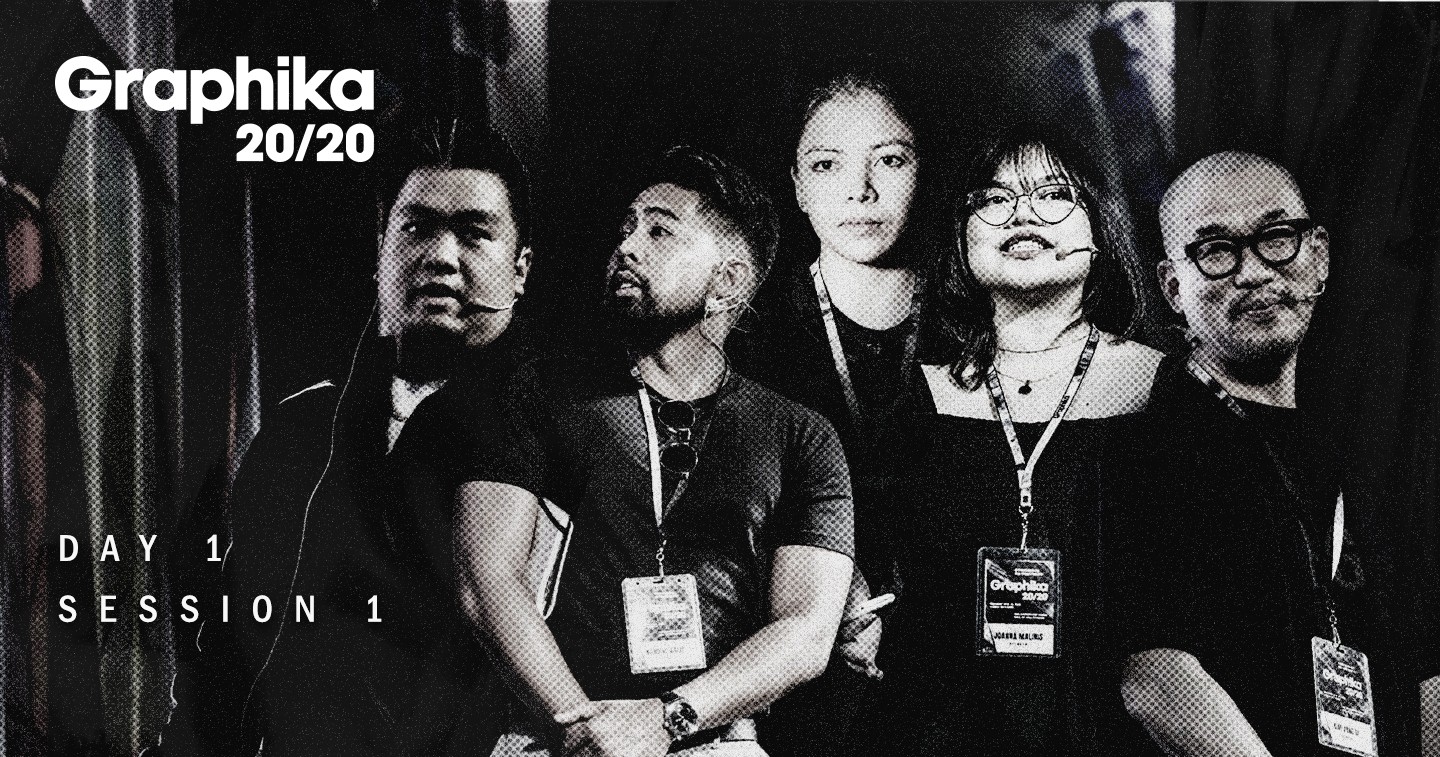



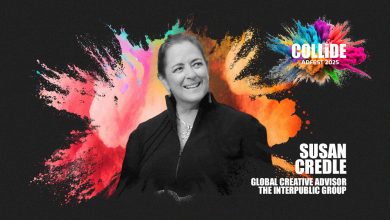
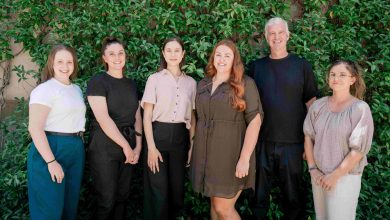
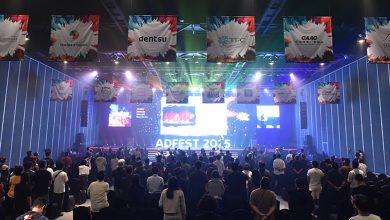



Great read! You may try to visit https://a2designlab.com/, a Manila based design firm, that offers different kinds of design needs and insights in branding and designing.